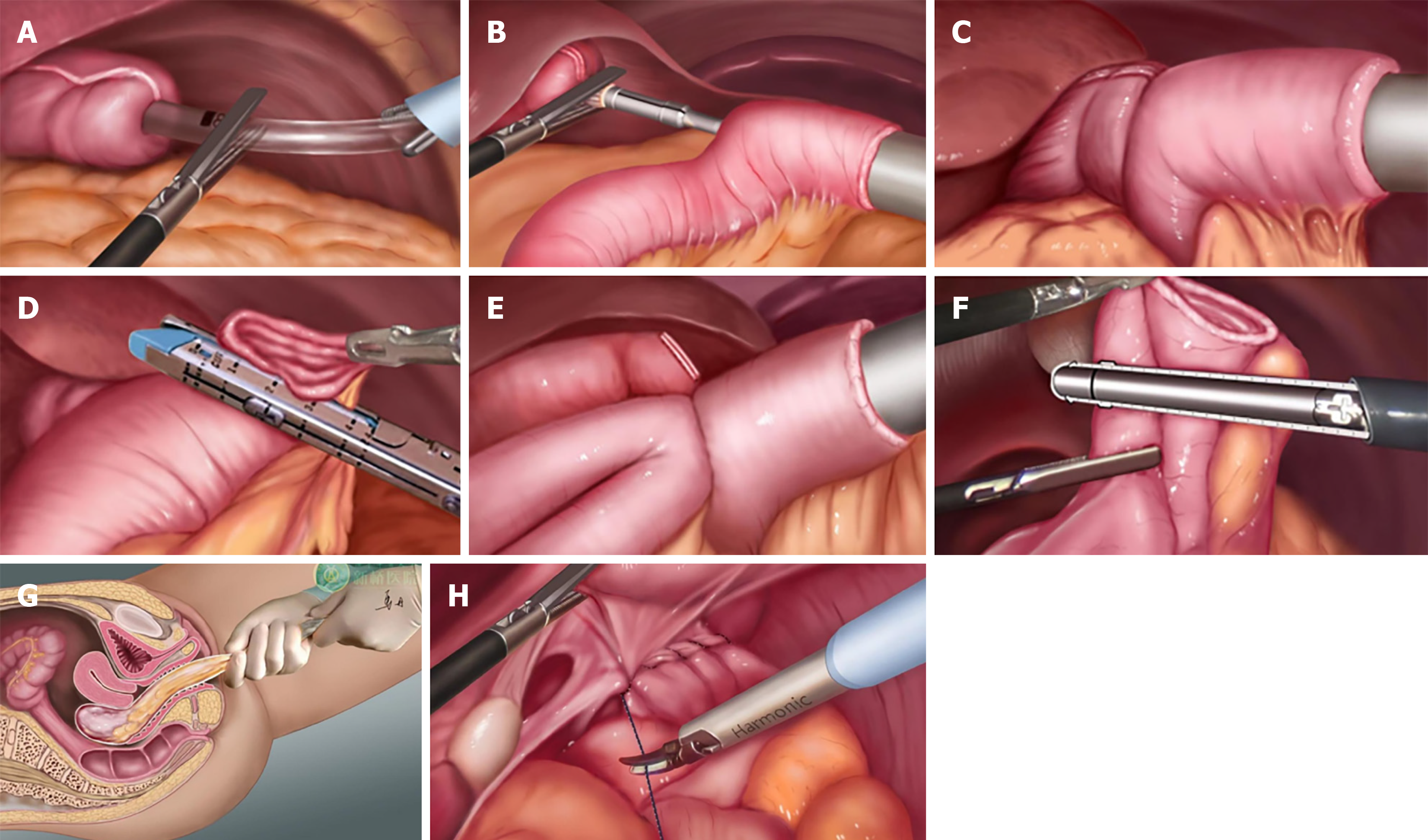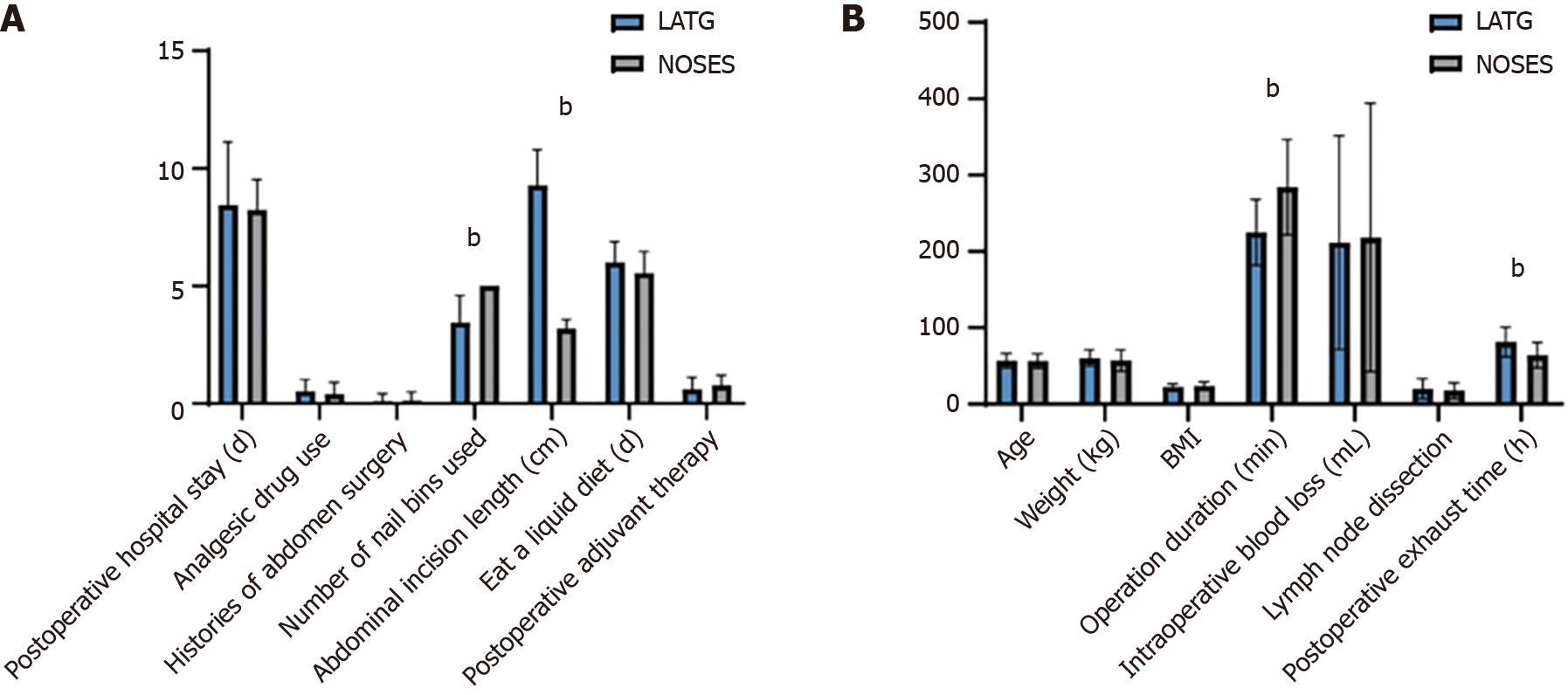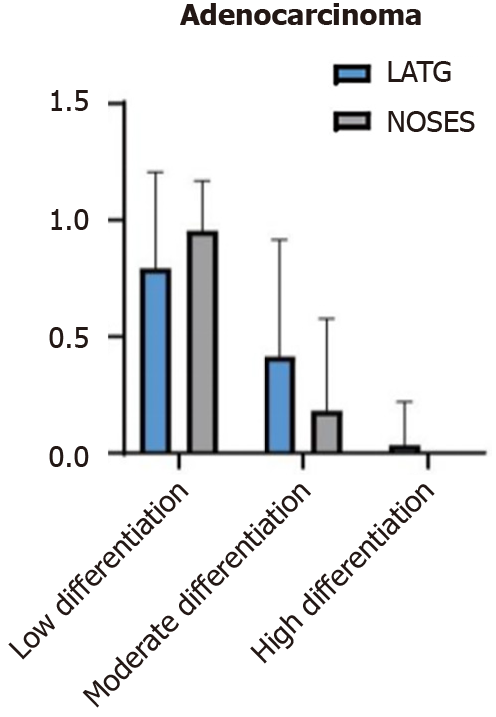Copyright
©The Author(s) 2024.
World J Gastrointest Surg. Jun 27, 2024; 16(6): 1527-1536
Published online Jun 27, 2024. doi: 10.4240/wjgs.v16.i6.1527
Published online Jun 27, 2024. doi: 10.4240/wjgs.v16.i6.1527
Figure 1 Surgical procedure.
A: The anvil was pulled out from the esophageal stump; B: The operating handle was placed through the left upper abdominal puncture hole; C: The esophagojejunal anastomosis was performed by laparoscopic 25-mm circular stapler; D: The jejunal stump was closed with a linear stapler; E: The 21-mm anvil was fixed by purse-string suturing under laparoscopy; F: The jejunal stump was closed with linear stapler; G: The specimen was delivered through the vagina; H: The horizontal incision on the posterior wall of the vagina was closed with a running absorbable suture.
Figure 2 Clinical characteristics in the natural orifice specimen extraction surgery group and laparoscopic-assisted total gastrectomy group.
NOSES: Natural orifice specimen extraction surgery; LATG: Laparoscopic-assisted total gastrectomy; BMI: Body mass index. bP < 0.01.
Figure 3 Adenocarcinoma.
NOSES: Natural orifice specimen extraction surgery; LATG: Laparoscopic-assisted total gastrectomy.
- Citation: Zhang ZC, Wang WS, Chen JH, Ma YH, Luo QF, Li YB, Yang Y, Ma D. Perioperative outcomes of transvaginal specimen extraction laparoscopic total gastrectomy and conventional laparoscopic-assisted total gastrectomy. World J Gastrointest Surg 2024; 16(6): 1527-1536
- URL: https://www.wjgnet.com/1948-9366/full/v16/i6/1527.htm
- DOI: https://dx.doi.org/10.4240/wjgs.v16.i6.1527











